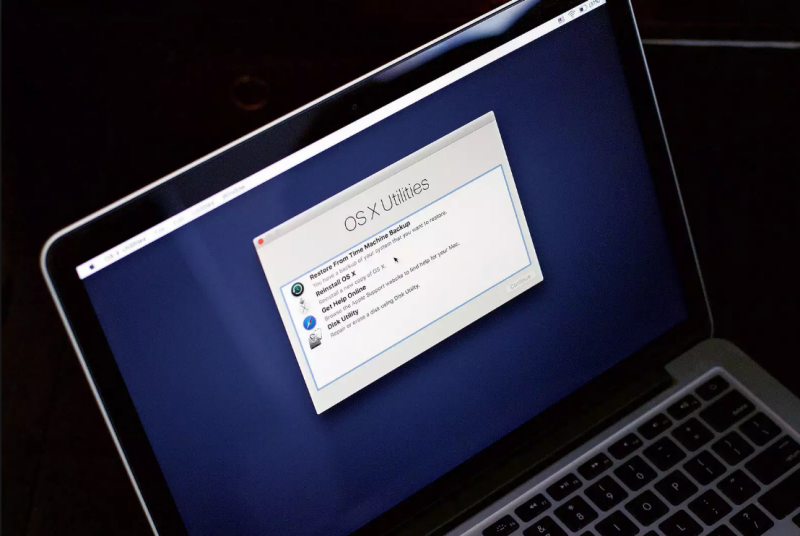

- #Restore osx how to#
- #Restore osx mac os#
- #Restore osx install#
- #Restore osx software#
#Restore osx install#
It's a lot more work involved, but insures a cleaner install as only files are returned, not everything like TM or reverse clone does.
#Restore osx software#
From the Apple menu, select Software Update. This is the more 'manual' method to restore a previous OS X version to your machine, useful for fixing issues as well, fresh install etc. Once the installation is complete, you will be asked toĮnter basic information and have the option to transfer data from Click Install and enter your Apple ID information if Click the Finish button to return to the Select the disk to recover files from panel or Exit to quit. Follow the instructions and then choose your hardĭisk. #Restore osx mac os#
Click Reinstall Mac OS X, and then clickĬontinue. Options., adjust the slider accordingly, and click If you would like to securely erase your data, click Security Memory Card formatted files folders restoration software undelete deleted GIF, TIFF photos RIFF, PNG, BMP images JPEG, JPG pictures.  Next to "Format:", make sure Mac OS Extended (Journaled). In Disk Utility, from the left column, click your hard. Restart your computer, and immediately hold down command-r until the gray Apple logo appears. Reinstalling while erasing everything on your computer I have limited bandwidth per month so I want to copy my DotA 2 files so I was wondering that since both are UNIX based systems then it might be possible. from the Apple menu, and install any available updates. If youre running macOS High Sierra or later on a Mac with an SSD, your choices will be. Click on the format you want to use for your drive. Click on your startup disk in the Disk Utility sidebar.
Next to "Format:", make sure Mac OS Extended (Journaled). In Disk Utility, from the left column, click your hard. Restart your computer, and immediately hold down command-r until the gray Apple logo appears. Reinstalling while erasing everything on your computer I have limited bandwidth per month so I want to copy my DotA 2 files so I was wondering that since both are UNIX based systems then it might be possible. from the Apple menu, and install any available updates. If youre running macOS High Sierra or later on a Mac with an SSD, your choices will be. Click on the format you want to use for your drive. Click on your startup disk in the Disk Utility sidebar. #Restore osx how to#
When the installation is complete, select App Store. How to erase your startup disk in macOS Recovery mode.Click Install, and enter your Apple ID information if prompted. Follow the instructions on the screen, and then choose your hard disk. Click Reinstall OS X, and then Continue.If prompted, select your main language and then click the arrow.Restart your computer, and immediately hold down command-r until the gray Apple logo appears.
:max_bytes(150000):strip_icc()/DiskUtilitycontinueannotted-466f545a0f694970be81b88d10e2ac92.jpg)
For example, if you are already booted into the Lion you originally purchased with your Apple ID or if an instance of the Lion installer is located anywhere on your computer. There are situations in which this will not work. You should now see an active Install button to the right of your Lion purchase entry. Hold down the OPTION key and click on the Purchases icon in the toolbar. Note : You can also re-download the Lion installer by opening the App Store application. Reinstall Lion: Select Reinstall Lion and click on the Install button.
Set the format type to Mac OS Extended (Journaled.) Click on the Erase button and wait until the process has completed. Otherwise, click on the Erase tab in the DU main window. SMART info will not be reported on external drives. If it does not say "Verified" then the drive is failing or has failed and will need replacing. Note the SMART status of the drive in DU's status area. After DU loads select your hard drive (this is the entry with the mfgr.'s ID and size) from the left side list. Select Disk Utility from the main menu and click on the Continue button. Select the Recovery HD and click on the downward pointing arrow button. Alternatively, restart the computer and after the chime press and hold down the OPTION key until the boot manager screen appears. Restart the computer and after the chime press and hold down the COMMAND and R keys until the menu screen appears. Built right into OS X, OS X Recovery lets you repair disks or reinstall OS X without the need for a physical disc. If possible backup your files to an external drive or second internal drive.




:max_bytes(150000):strip_icc()/DiskUtilitycontinueannotted-466f545a0f694970be81b88d10e2ac92.jpg)


 0 kommentar(er)
0 kommentar(er)
